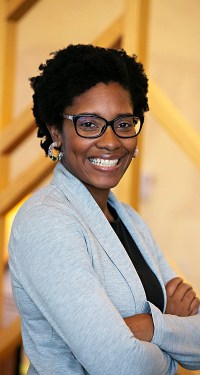Brightspace has a variety of formative and summative assessment tools available for instructors to use in their courses. You may be wondering which tool you should use. This blog post explains the difference between the Quizzes, Surveys, and Self-Assessments (SA) tools to help you determine which of the tools is the best tool to meet your needs.
- A Quiz provides students with a score. Quizzes can be linked to the Grade Book to affect the final grade, but are not required to be linked to the Grade Book. This tool is commonly used for summative assessments (i.e., quizzes, tests, exams).
- Surveys are not graded or scored, but do provide results to the instructor. Survey results can be viewed and downloaded as needed. Surveys can be anonymous.
- Self-Assessments is a formative assessment tool that enables instructors to provide learners with a series of questions and give immediate feedback to their responses. A Self-Assessment is solely for the purpose of the learner to assess their understanding of the content. Instructors CANNOT view the results of a Self-Assessment, but they are able to see who has taken the Self-Assessment and the time spent on it. The omission of numeric evaluation enables learners to make reflective learning and course material comprehension their main priorities during a Self-Assessment.
The following table compares the feedback and reporting for each tool:
| |
Quizzes |
Surveys |
Self-Assessments |
| Feedback for learner |
Feedback is released based on the options set by instructor. Feedback can be setup to be instant (upon submission) or delayed. |
Feedback is released after completion in the form of a report. |
Feedback is provided immediately after answering question. |
| Reporting for instructor |
Reporting for Instructors – yes, instructors can see summative feedback on scores and individual questions. |
Reporting for Instructors – yes, reports are generated, and can be done so anonymously. |
Reporting for Instructors – yes, but limited to who has taken SA and the time spent; instructors CANNOT view results of the SA. |
This table provides some use cases for Quizzes, Surveys, and Self-Assessments:
| Tool |
Use Case |
| Quizzes |
- Measuring knowledge acquisition: Assess factual recall, comprehension, and application of learned concepts. Assess skills for the purpose of determining whether instruction has been effective.
- Evaluating critical thinking: Open ended questions requiring analysis, synthesis, or evaluation can assess higher-order thinking skills.
- Standardized test: Deliver high-stakes tests with secure features like time limits, question randomization, paging, and integration with lockdown browsers.
- Formative assessment: Create low-stakes quizzes for students to practice and receive immediate feedback. Assess skills for the purpose of identifying areas needing improvement.
|
| Surveys |
- Gauging student understanding: Use anonymous surveys to assess student comprehension of course material before, during, or after a lesson.
- Gathering opinions on teaching methods: Evaluate the success of specific teaching approaches or gather suggestions for improvement.
- Course satisfaction surveys: Collect feedback on student experience with the course content, delivery, and overall effectiveness.
|
| Self-Assessments |
- Promoting metacognition: Encourage students to reflect on their learning progress, strengths, and weaknesses through self-evaluation activities.
- Identifying learning gaps: Allow students to assess their own understanding of key concepts before moving on to new material.
- Personalized learning: Use self-assessment results to tailor learning experiences or provide targeted resources based on individual needs.
|
By understanding the strengths of each tool, instructors can select the most effective tool for the job.
A Note About the Question Library
The Question Library is a central repository that stores and archives questions which you can reuse within a course. You can create multiple sections within the Question Library to organize your questions by type and topic, making it easier for you to find, use, and reuse questions in your quizzes, surveys, and self-assessments.
As a better practice for storage, organization, and easy access, I recommend that you create all your questions using the Question Library. You can also consolidate questions created within the Quizzes, Surveys, and Self-Assessments tools by importing them back into the Question Library.
Want more information?
Quizzes Tool
Surveys Tool
Self-Assessments Tool
Question Library
#LEX Advanced Topics:
Rethinking and Improving Online Tests in Brightspace
Allow Learners to Reflect on Their Learning
View current, past, and preview upcoming Continuous Delivery release notes
Instructors Quick Start Tutorial
Brightspace Known Issues
Request a sandbox course
Sign-up for Brightspace training sessions
You can find Brightspace help at D2L's website.
Join the Brightspace Community.
Try these Brightspace How-To documents.
Visit our Brightspace FAQs for additional Brightspace information
or schedule a one-on-one session, email, or
call Janice Florent: (504) 520-7418.
Note: Are you doing something innovative in Brightspace or perhaps you've discovered a handy tip? Share how you are using Brightspace in your teaching and learning in The Orange Room.
Image credit: image by StockSnap from Pixabay (image cropped)








